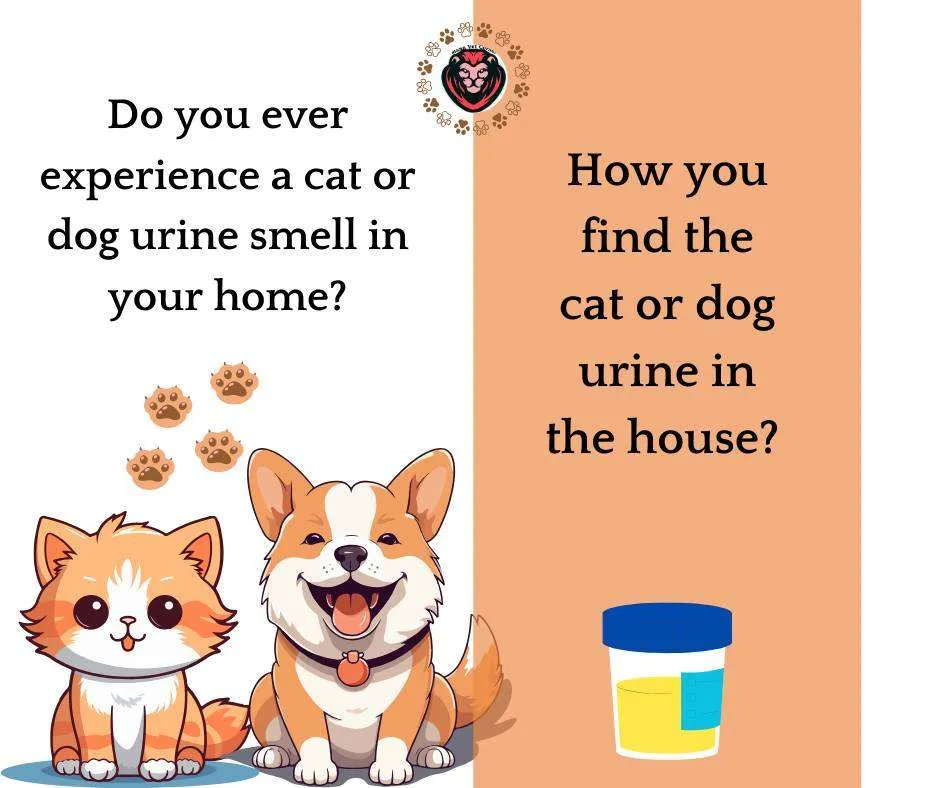The glow of cat urine under ultraviolet (UV) light is due to phosphorescence and the presence of certain compounds that fluoresce when exposed to UV light. The science behind glow cat urine lies in its unique chemical composition, which makes it fluoresce under UV light. Urochrome and urobilin are key compounds responsible for this glow. These byproducts of hemoglobin breakdown naturally emit a yellowish-green fluorescence. Another factor in the science behind glow cat urine is tryptophan metabolism. Cats consume protein-rich diets, leading to metabolic byproducts that enhance fluorescence. Ammonia and its derivatives may also react under UV light, but they mainly contribute to odor. Understanding the science behind glow cat urine helps detect hidden stains and monitor feline health.
Fluorescence Mechanism: When exposed to ultraviolet (UV) light, these phosphorus compounds absorb the high-energy UV photons. This excites the electrons in the phosphorus atoms, causing them to jump to higher energy levels. As the electrons return to their normal state, they release energy in the form of visible light, which we see as a glow.

Chemical Properties: Cat and dog urine contains phosphorus compounds. Phosphorus is a naturally occurring element that, when combined with other substances, can exhibit fluorescent properties.
Practical Applications of UV Light for Detecting Pet Stains
Detection of Invisible Stains:
- Challenges of Pet Stains: Pet urine stains can often be invisible to the naked eye, especially on carpets, upholstery, and other fabrics. These hidden stains can harbour bacteria and produce unpleasant odours if not properly cleaned.
- UV Light Detection: UV lights, also known as black lights, emit light at wavelengths that cause phosphorus and other substances in urine to fluoresce. This makes the stains visible, glowing typically in a bluish or greenish hue.

Steps for Using UV Light to Detect Pet Stains
- Preparation: Darken the room as much as possible to enhance the visibility of the fluorescence.
- Scanning: Turn on the UV light and slowly scan the suspected areas. The urine stains will appear as glowing spots.
- Marking: Once a stain is detected, mark the area with tape or another indicator to ensure you clean it thoroughly.
Benefits of Using UV Light:
- Thorough Cleaning: Detecting and cleaning all urine stains prevents lingering odours and potential damage to flooring and fabrics.
- Health and Hygiene: Properly cleaning pet urine reduces the risk of bacteria growth and maintains a healthier home environment.
- Behaviour Correction: Identifying all soiled areas can help in training pets by addressing frequent spots they might be using.

Importance for Pet Owners and Professionals
For Pet Owners:
- Home Cleanliness: Ensuring a clean living space by identifying and eliminating all pet stains helps maintain hygiene and comfort in the home.
- Odour Management: Removing hidden stains helps manage and prevent persistent odours associated with pet urine.
- Training Aid: Knowing the exact locations of urine spots can assist in better training strategies for pets, discouraging them from using inappropriate areas.
For Professionals:
- Cleaning Services: Professionals in cleaning services often use UV lights to offer more thorough and effective cleaning solutions to clients with pets.
- Veterinary Use: Veterinarians might use UV lights to detect urine-marking behaviours or medical issues in pets that cause frequent urination.
Conclusion
Cat and dog urine glows under UV light due to the presence of phosphorus compounds, which absorb UV energy and re-emit it as visible light. Pet owners and professionals commonly use UV lights to detect pet stains that are invisible to the naked eye. This can help in thoroughly cleaning and preventing lingering odours in homes.
- Anatomy
- Anesthesiology
- Animal Husbandry
- Animal Sciences
- Avian
- Camelidae
- Canine
- Cattle
- Clinical Medicine
- Clinical Pathology
- Clinical Sciences
- Clinical Surgery
- Dairy Technology
- Epidemiology
- Equine
- Feline
- Fun Facts
- Genetics
- Goat
- Medicine
- Microbiology
- Microbiology
- Non Ruminants
- Nutrition
- Parasitology
- Pathology
- Pharmacology
- Physiology
- Poultry Husbandry
- Public Health
- Radiology
- Reproduction
- Ruminants
- Sheep
- Uncategorized
- Veterinary Sciences
- Wild Animals
- Winter Guide: Keep Your Pets Safe and Warm During Winter
- Cattle Dogs: Intelligent Breeds for Active Families
- Bluetick Coonhound: A Dog Breed & Adaption Guide
- Heartworm (Dirofilaria) in Dogs: A Complete Vet Guide
- Top Pet Grooming & Veterinary Clinics in Peshawar
